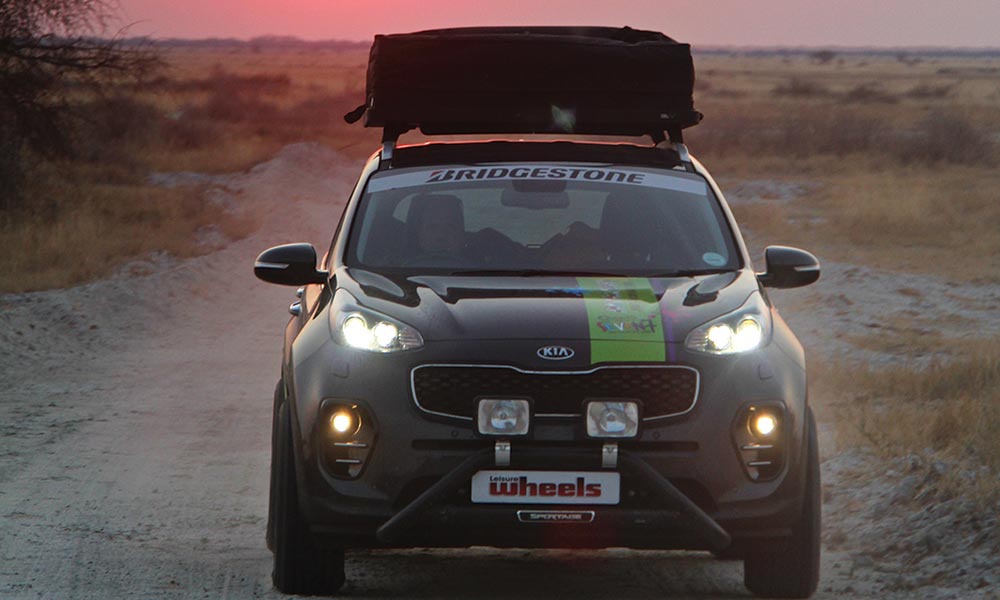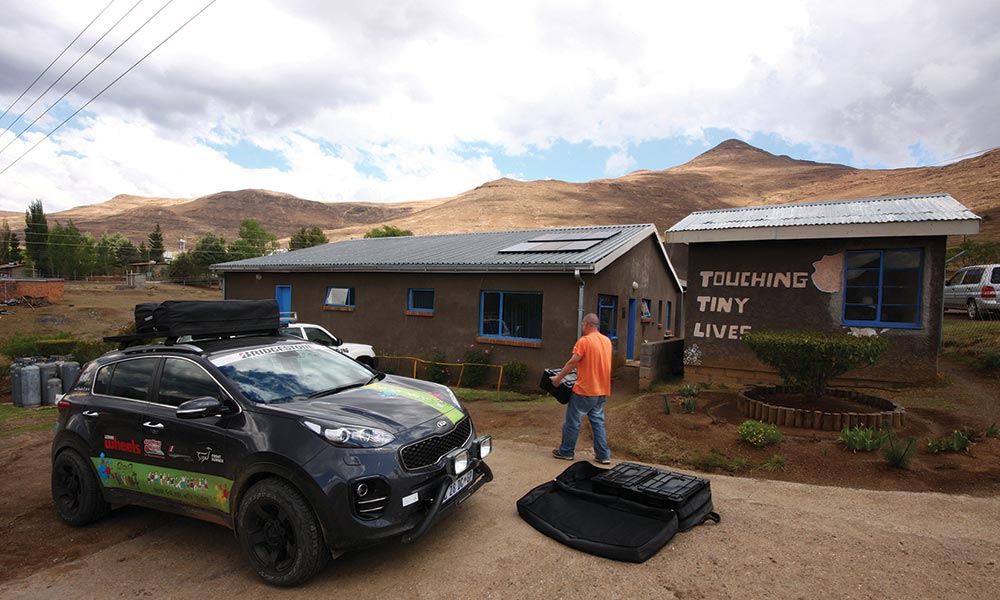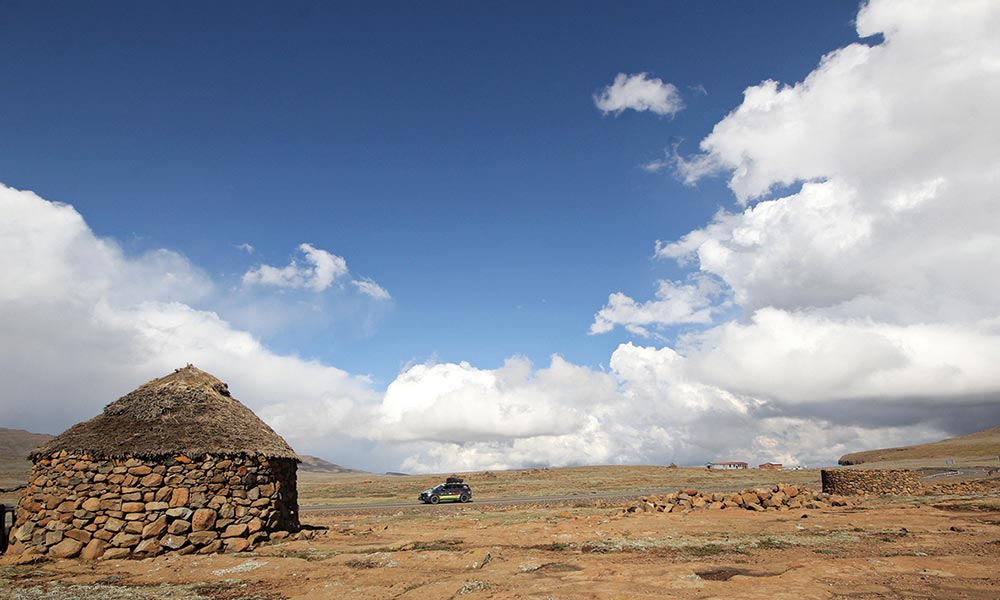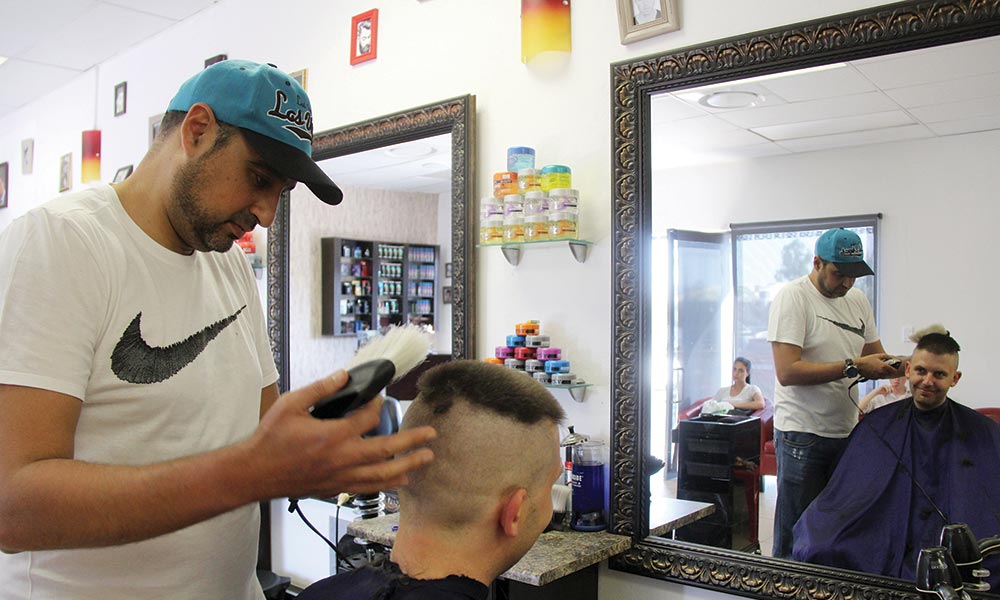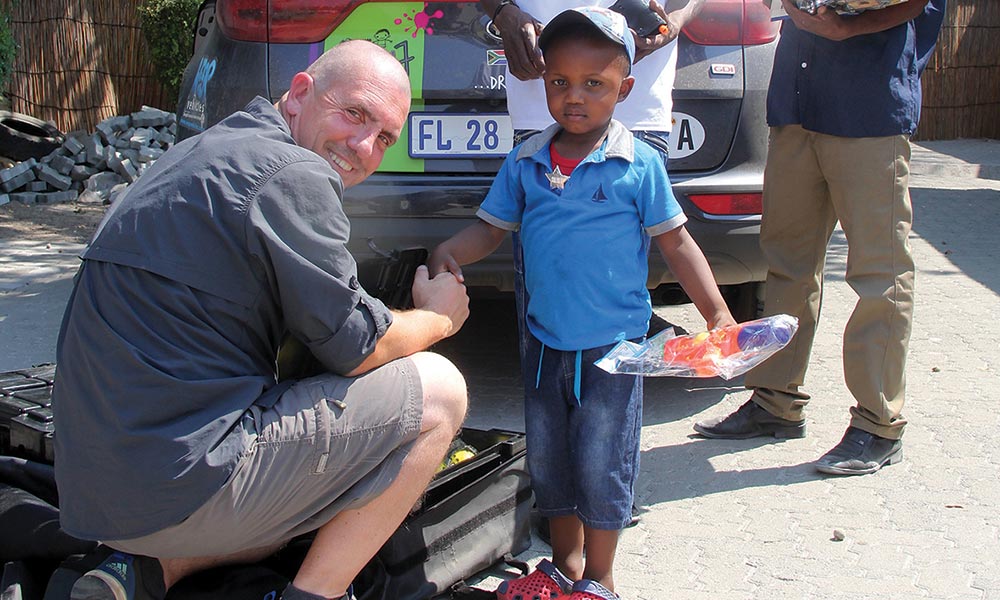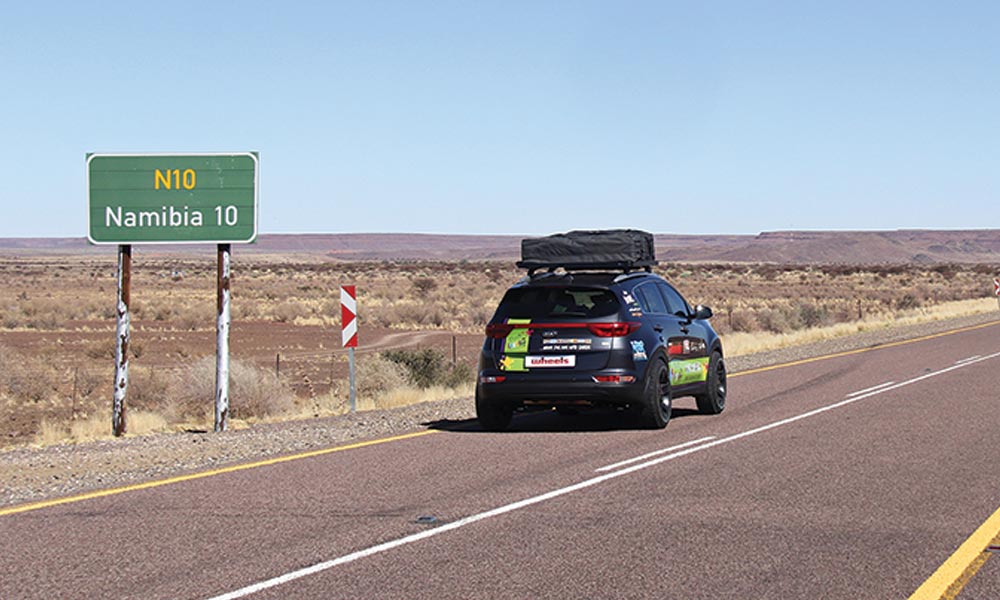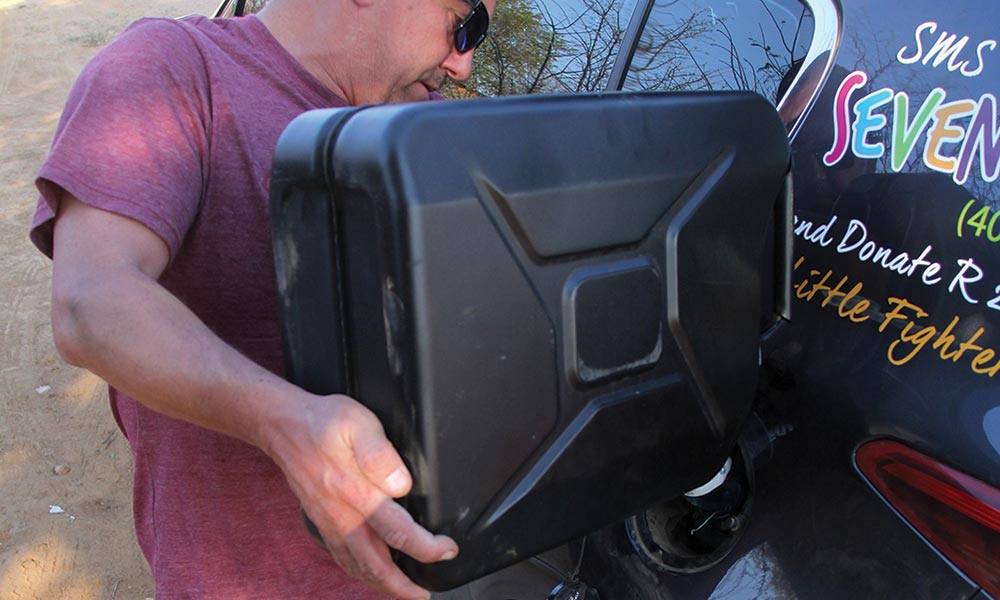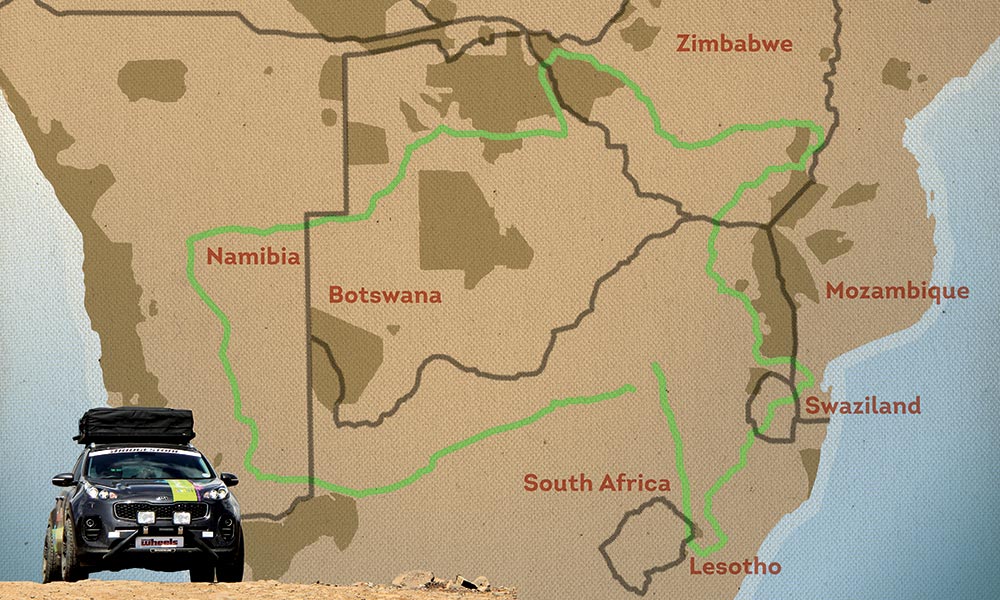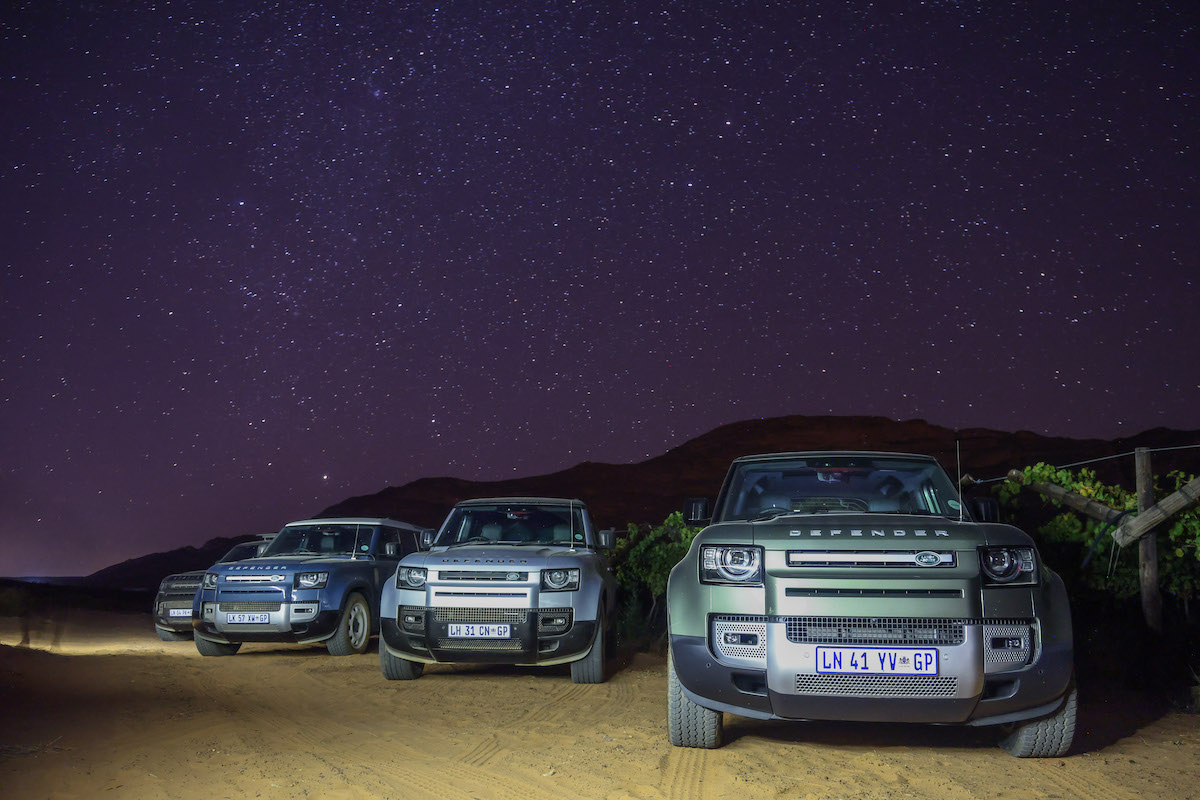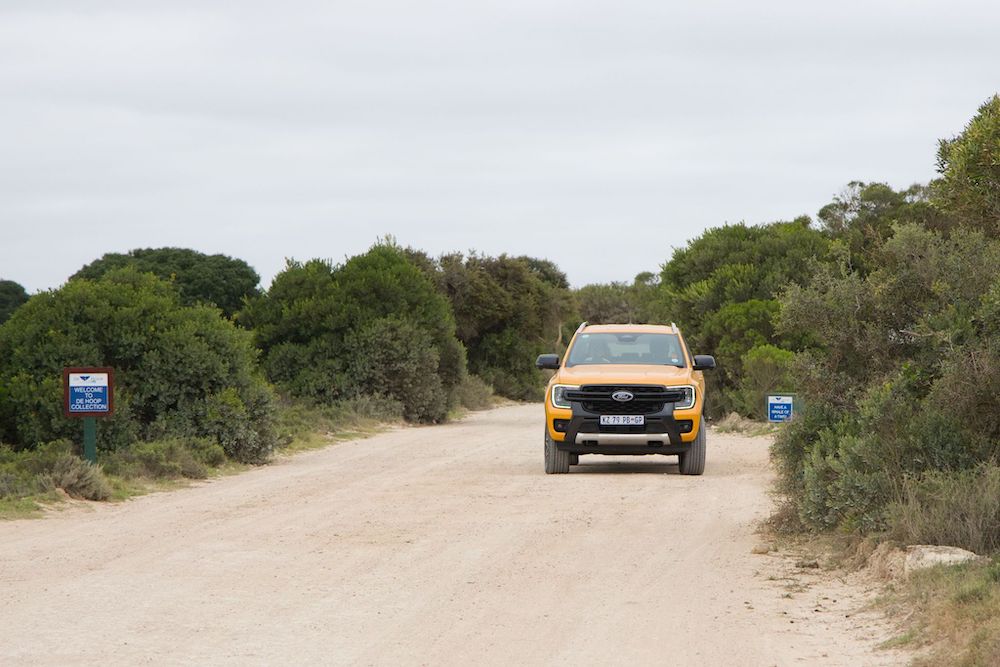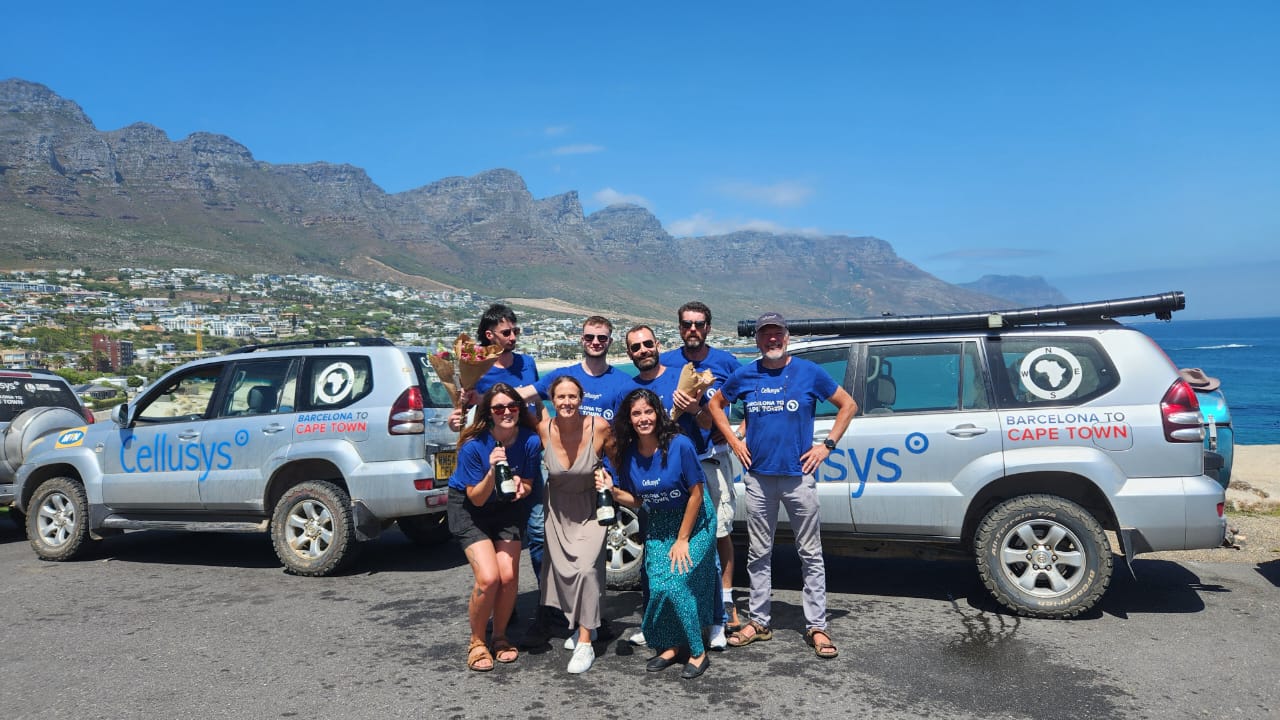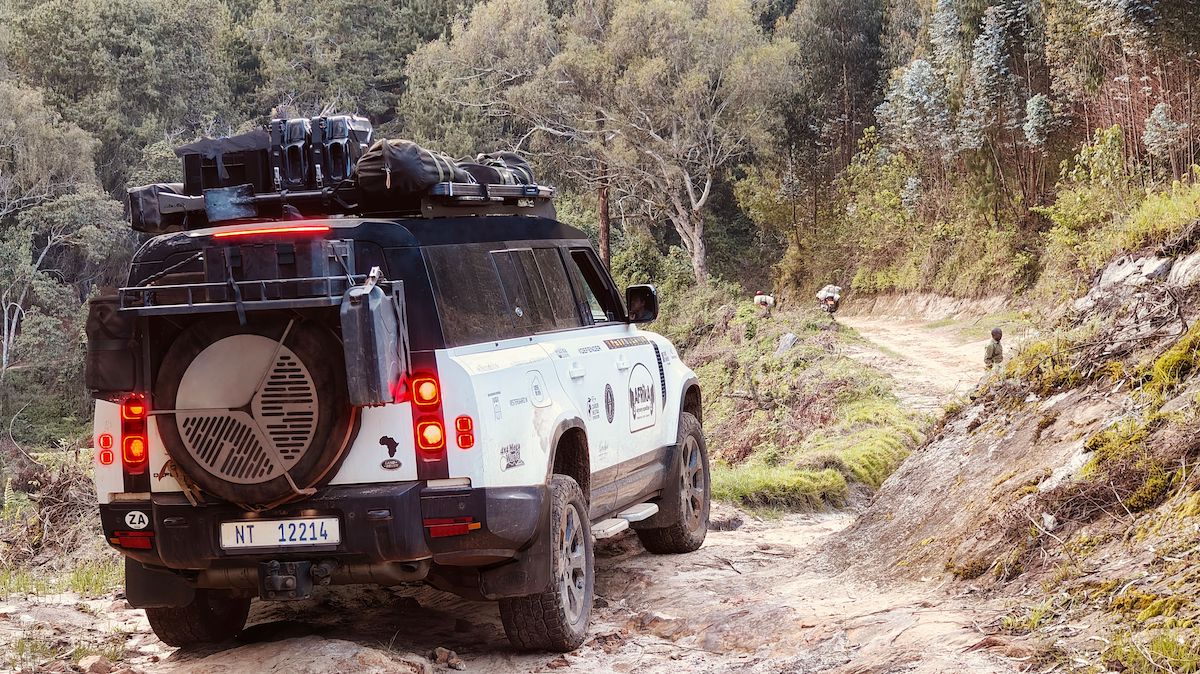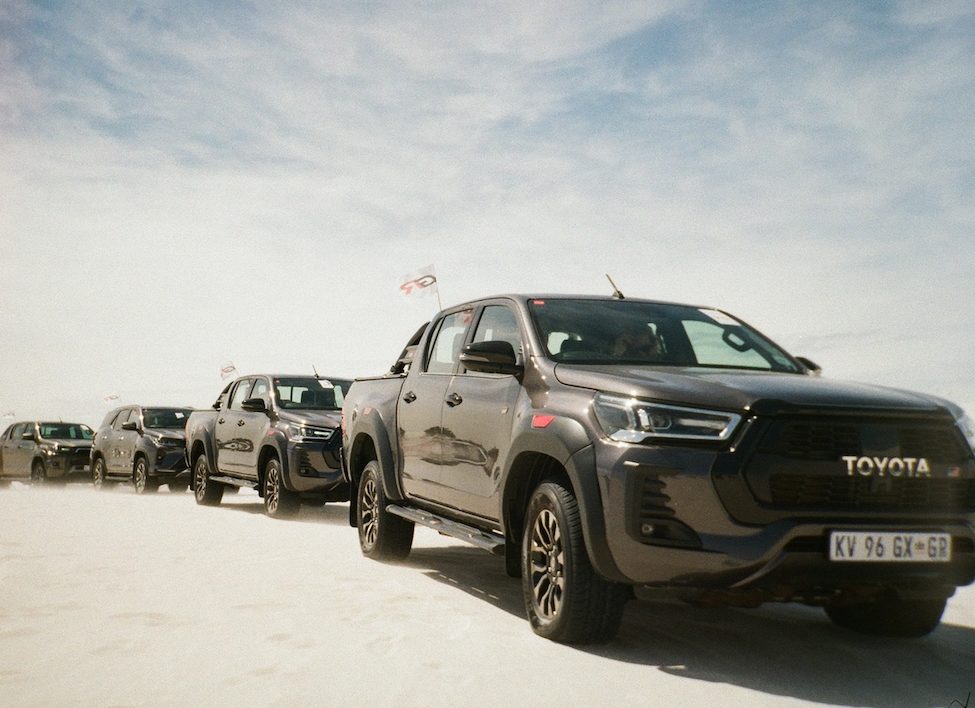The long winding road
We’ve done it before – travelled through seven countries in seven days – but this time it was harder. Much harder. The nights were darker, the hours were longer, the roads were rougher, the police were, well, the police. Had it not been for an Apple Music playlist, we’d probably never have made it through…
We came up with the concept last year: travel through seven countries in seven days as a way of raising funds (and awareness) for kids with cancer. The route would start in Joburg, then pass through Namibia, Botswana, Zimbabwe, Mozambique, Swaziland and Lesotho, and finally end in Pretoria. Along the way, a children’s hospital would be visited in every country. To be honest, last year’s maiden journey wasn’t all that hard. The route was demanding – about 7 000km in total – but there were three of us who could take turns behind the wheel. Also, the road wasn’t bad. For the most part, we travelled on well-maintained tar roads.
This time, though, things were different. First, there were only two of us, which meant far more time behind the wheel. Second, we stumbled upon a couple of atrocious roads that we had avoided during our previous outing; roads infested with potholes and police blockades. But, as is so often the case, it was music that saved us. It was an Apple Music playlist that kept us awake during those long nights, energised us when we were feeling low, and calmed us down when police roadblocks drove us mad.
In hindsight, we should have created a longer playlist. A hundred songs sounded sufficient at the outset, but when you’re travelling 1 000km a day, you burn through 100 songs pretty quickly. But I quite liked our limited playlist. The songs repeated endlessly until they formed a kind of subliminal soundtrack that continued to add texture to the experience long after we stopped registering every individual song. So, seeing as how central music was to the experience, here is our journey – seven days, seven countries, 7 000km – in seven songs.
We left Joburg as the clock struck 12am on Friday, 14 October. Ahead of us stretched a road of around 1 800km to Windhoek. We were travelling via the Northern Cape, even though cutting through Botswana would have saved us about 400km, since we wanted to pass through the countries in a clockwise fashion. Last year we drove a Kia Sorento. This year, we were travelling in the brand-new Sportage. It might not strike you as an obvious overlander, but it had a couple of things in its favour. Our Sorento had been front-wheel drive, and sported a manual transmission. The Sportage was an all-wheel drive (AWD, with lockable centre diff), and had a six-speed auto ‘box. The automatic transmission meant we would enjoy a more relaxed drive that required less input, and the AWD system would be better equipped to deal with the handful of gravel roads we would encounter (including Sani Pass).

What wasn’t quite suited to our journey, though, were the Kia’s 19-inch rims and low-profile tyres, so we swapped these out for 17-inch XD Series Rockstar2 rims and beefier Bridgestone all-terrain D697 rubber. As we headed north, we were already quite tired. As tends to happen with these kinds of projects, there had been a ton of things to finalise in the hours running up to our departure. So while it would have been great to get some sleep before setting off, it wasn’t to be. So, less than an hour after leaving on the first 18-hour leg of our trip, our eyelids were already starting to sag. The problem with driving a car with an automatic gearbox on a straight and quiet road is that there isn’t much to occupy your mind. When you’re wide awake, that’s fine. When you’re sleep-deprived and exhausted, it’s a problem. Looking back on the first six hours of our journey, it’s tough to remember much detail. It’s all a haze of cat’s eyes and white stripes. The road made us so sleepy that we were eventually forced to swap seats on an hourly basis. And, of course, we pumped the rock music. By 7am, we were in Upington.
We had no time to waste, but we did refuel and have some McDonald’s for breakfast. It also gave us the opportunity to double-check our slightly haphazard wheel fitment, which had been completed late the previous night, in the dark. The kind folk at Tiger Wheel & Tyre Upington double-checked the wheels for us before the shop was even really open for business, and they didn’t charge us a cent. Thanks so much, guys, we really appreciate it. Wheels checked, we were back on the road. We were still tired, but at least the sun was shining now, so staying awake wasn’t quite as hard. We still had a stiff 1 000km to go, but the distance to the Nakop border post was fairly short (132km). So, about an hour after leaving Upington, we were preparing to enter Namibia. The Nakop/Ariamsvlei border was quiet, clean and impressively large (it’s even open 24 hours a day). We were through in about 15 minutes and would recommend this post to anyone. With about 850km to go for the day, we now had our sights on Windhoek. As anyone who’s ever travelled in Namibia knows, distances are substantial, roads are straight and interesting scenery is, well, on the sparse side. In order words, the travelling is tough when you’re sleepy.
But, with plenty of stops to stretch our legs and swap drivers, we made it. By 6pm, we were in Windhoek. We handed out some toys at Windhoek Central Hospital and then headed for the Midgard Country Estate, where we spent the night. We had a quick meal and just one beer each. All we were interested in was bed. By 10pm we were both fast asleep. We were up at 3am, ready to hit the road once again. Ahead of us was yet another long day. We were headed for Nata in Botswana, more than 1 000km from the capital, Windhoek. Quick quiz: Do you know what’s fun about driving more than 1 000km on straight and uninteresting roads? Absolutely nothing! We, of course, had no option but to spend nearly 15 hours doing exactly this, but I can at least save you, dear reader, from having to experience the tedium vicariously, here. Our day can be summed up in the following manner: lots of kilometres, lots of Red Bull, lots of loud music.
Occasional stops for fuel and bathroom breaks. More Red Bull, more loud music. Frequent naps (when not behind the wheel). The only notable event was when we stopped in Maun to meet up with a representative from a local cancer society to hand over some toys. That, I think, is really all you need to know about this particular leg of our trip. We arrived at Nata just as the sun was setting, and spent the night at the basic, but comfortable, Pelican Lodge. It’s a good alternative to Nata Lodge, just don’t order any Jägermeister. Two doubles cost us R200, which, even for a lodge in the lucrative business of milking European tourists, seems a tad exorbitant. We were on the road again at 6am, heading for the Pandematenga border post, not too far from Nata. As we set off, we knew we were embarking on one of the toughest days of our journey. Our destination was Chipinge in Zimbabwe, a town that was roughly 1 300km from the Pandematenga border.
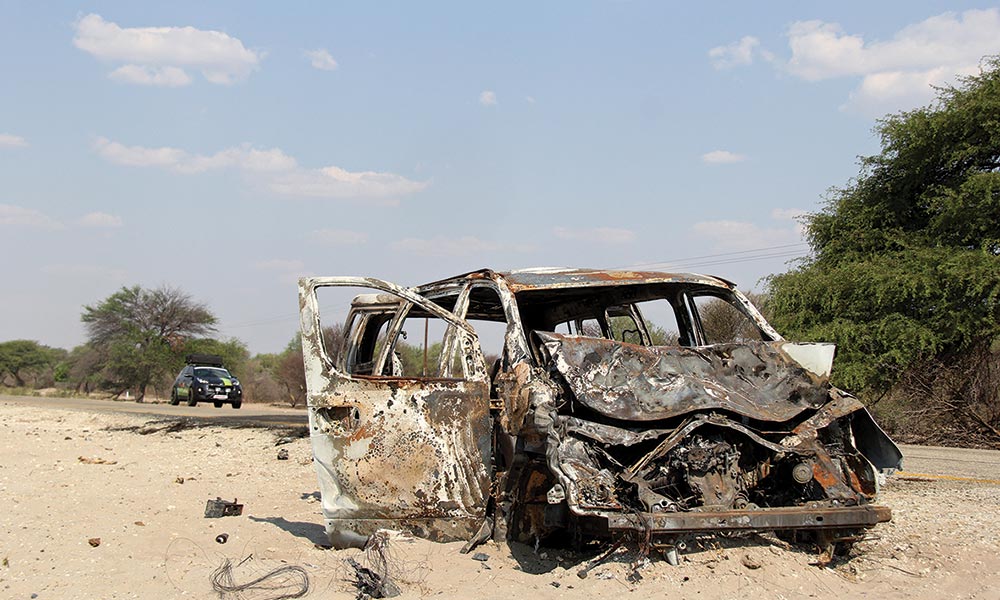
A couple of things had us worried. First, the opening stretch after the border post was dirt, so we knew we wouldn’t be able to travel at 120km/h for the first hour or two. Second, we were acutely aware that we would be passing through countless road blocks along our route. The Zimbabwean police are notorious for shaking down travellers, and we simply didn’t have time to get bogged down in protracted fine/bribery negotiations. If they wanted to fine us $20 for wearing reflective Sunglasses on a Sunday, carrying a warning triangle that’s 2.73mm too large, or any other reason they could come up with, we would simply have to pay the fine and move on. We arrived at the border post a good hour before it was ready to start operating. (The concept of time is more fluid here, which is understandable if you consider that several days often go by without a single car passing through the post.) A night-time guard was still on duty, and he asked us where we were headed. Danie placed his hands on his hips and nodded towards the eastern horizon with his head. “We sleep in Chipinge tonight,” he said stoically.
The guard very nearly fell off his seat. “Chipinge?” he shouted in utter astonishment. Had Danie told him we were headed for the year 2073 in a Sportage-shaped time machine, he could not have been any more shocked.
“Chipinge?” he asked again.
“Chipinge,” Danie replied.
“Chipinge?”
“Chipinge.”
“Chipinge?”
“Chipinge.”
And so it went until the border post opened. When all our papers had been stamped, we headed for the Zimbabwean side. “Where are you going?” the official asked. “Just passing through. Sleeping in Chipinge tonight,” Danie said.
“Chipinge!”
“Chipinge.”
“Chipinge?”
“Chipinge.”
Yes, Chipinge was clearly very far.
Thankfully, the dirt road from the border post was in pretty good shape – not fly-like-the-wind great – but good enough to maintain a decent speed. Soon, we were on tar. And soon, we were at our first police block. Surprisingly, though, the official didn’t seem interested in squeezing dollars out of us. I wouldn’t exactly describe the greeting we received as a ‘warm welcome’, but it was border-line-civil. As the day wore on, we passed through many, many more police blocks. But there was no extortion. We weren’t even asked for a Coke. Zimbabwe was looking like a mighty fine place. Our average speed was acceptable and we were making good time. But, as had been made abundantly clear to us at the border, Chipinge was very far. Eventually, night fell. And as the amount of light decreased, the quality of the road deteriorated. Already exhausted, we were now forced to play a fun game of ‘dodge the pothole while an oncoming truck shines its brights in your eyes’. It wasn’t actually a fun game. And, of course, the oncoming truck was playing the same game, so he tended to swerve into your lane with alarming regularity.
For the first time on our trip, death seemed like a very possible outcome. Somehow, though, we made it through. We immediately went to the local hospital, where we met with Dr Kudzanai Guveya. Dr Guveya was clearly an intelligent and compassionate individual who is doing his best in difficult circumstances. The situation for young kids with cancer in the area was dire, but someone like Dr Guveya gives you reason to hope. After handing over some toys, we asked the good doctor if there was a place to stay in town. Immediately, he grew cagey and uncomfortable. “There’s a nice place outside of town,” he said. “You might want to go there. Your car will be safe there.” But the thought of getting back on the road did not entice us. We just wanted to sleep. Immediately. “Is there a place in town, perhaps?” Danie asked. “Well, there is a lodge,” Dr Guveya said. “It is not that bad.” Something in his voice, however, made me think that it was exactly ‘that bad’, but sleeping in a grimy lodge is better than colliding head-on with a truck, so we decided to roll the dice.
The Yadzonzayi Guest Lodge (don’t bother searching for it online – it has virtually no internet presence) was not a tourist destination. It was the kind of place you would expect truck drivers and travelling salesmen to frequent: a place where the drinks are cheap, the women are easy, and the rooms are rented out by the hour. Our two $40 rooms, when we were eventually shown to them, had a steamy, lived-in aroma that encouraged you to minimise physical contact with everything around you. I took my pillow, which I had brought from home, placed it at the foot of the bed, and tried to sleep. I awoke just after midnight to what sounded like a government coup. There was screaming and shouting and hooting. Glass bottles were being broken in the street. Despite never venturing outside to investigate, I’m pretty sure all of this was emanating from the local bar, which was no more than 50 metres from my room. It continued for most of the night. Had it not been for the fact that I was absolutely exhausted, I wouldn’t have got any sleep at all. What I did get, though, was fitful.

I’m afraid that you might think I’m exaggerating here about the state of Chipinge, so allow me to quote an article from the Zimbabwe Latest News website, with the informative but unwieldy title of ‘Prostitutes travelling from big cities to Chipinge & they are making a lot of money charging $50’. Here is one choice extract: “Used condoms are common features as well as dirty blankets. Inter-town sex workers can stay in not-so-dingy brothels in Chipinge town while they house anyone of their choice at any time.” Here is another: “She said as the competition for clients hots up, some hardcore and daring sex workers are now being helped by sangomas. ‘It appears we are now outnumbering our clients. New sex workers join us everyday. Nightclubs are full of new faces who look more beautiful. Sometimes business can be low. Some desperate ladies can charge a paltry $1 for short time. Now some of us are approaching n’angas in order to attract clients,’ she said.” That is as revealing an insight into the current state of Chipinge as I think anyone can offer.
Did you hear that noise last night,” I asked Danie as we packed our things into the Sportage the following morning. “No. What noise?” he asked. “Outside. It sounded as if people were rioting.” “No,” he replied. “Didn’t hear a thing.” Danie had clearly been even more exhausted than me. But at least he got some sleep. I hadn’t, really, so I was dead on my feet. Danie offered to drive the first stretch. We had about 1 000km to complete, and around 500km of that was inside Zimbabwe. The first 300km was on questionable secondary roads, and the remaining 200km was on the main road down to the Beitbridge border post. As soon as we set off, we realised we were in trouble. The roads were terrible. Proper terrible. The sort where you were lucky if you could manage more than 20km/h. What would happen if the entire 300km to the main road looked like this?
Danie carefully navigated the minefield of potholes, cursing as trucks passed him in both directions. I promptly fell asleep, waking only occasionally (and slightly) when Danie’s sudden braking for a pothole violently jerked my head forwards. So I don’t have much to relate about this road, but I have it on good authority that it was very, very bad. It did clear up eventually, but as the number of potholes decreased, the number of police roadblocks increased. By the time we hit the main road, police blocks were a near-constant irritation. You could barely travel 10km without hitting one. Moreover, these roadblocks weren’t being manned by the docile police force we had encountered on the previous day. These cops were far more ‘entrepreneurial’ in nature. There is a marked difference between the roadblocks you find on roads away from the popular tourist routes, and those you find on a main corridor. Where we had passed through around 20 roadblocks on quiet roads without incident the previous day, it didn’t take us long to encounter trouble on the road to Beitbridge.
As we left a small town, a police officer jumped out from behind a tree. We were doing 80km/h in a 60km/h zone that, in reality, should have been a 100km/h zone. There had been no sign to indicate that the speed limit was 60km/h, but that didn’t matter. We had to pay. We handed over $20, and drove on. Less than 10km later, we were stopped again. We were driving with both our headlights and fog lights on, and although this hadn’t been an issue until now, we were suddenly eligible for a $20 fine. After some exasperated negotiations, we left after paying a $5 get-out-of-a-ticket fee. And so it continued, though the police eventually ran out of things to fine us for. They tried, of course, but they failed. They checked our warning triangles. They checked our cooler box. They checked our fire extinguisher. The frustration they felt at having to let us go without lightening our pockets was visible each time.
By the time we reached Beitbridge, we’d had enough of Zimbabwe. In fact, we have no intention of visiting it ever again. At the best of times the police are unfriendly and belligerent. At the worst, they are downright crooked. It’s also very hard to get your hands on cash in the country (the ATMs are empty), and fuel is expensive (up to R30 per litre). The infrastructure seems to be deteriorating at an increasing pace, as well, and the state of the national parks is at an all-time low. On another recent trip to Hwange National Park, we paid R1 375 for the pleasure of staying in a chalet that was falling apart. So why visit Zimbabwe when everything is expensive and it’s clear you’re not wanted? Sure, the wildlife is nice, but Zimbabwe doesn’t have a monopoly on wildlife. There are plenty of other options out there… Okay, on to Beitbridge. The Beitbridge border post is infamous for the hassles it can cause travellers, but using it to exit Zimbabwe isn’t nearly as bad as using it to enter. We had no real problems, though we did have to pay $9 for the privilege of using the bridge. How exactly the Zim government uses this money to maintain the bridge isn’t clear, but at that stage we would gladly have paid $90 just to get out of Zimbabwe.
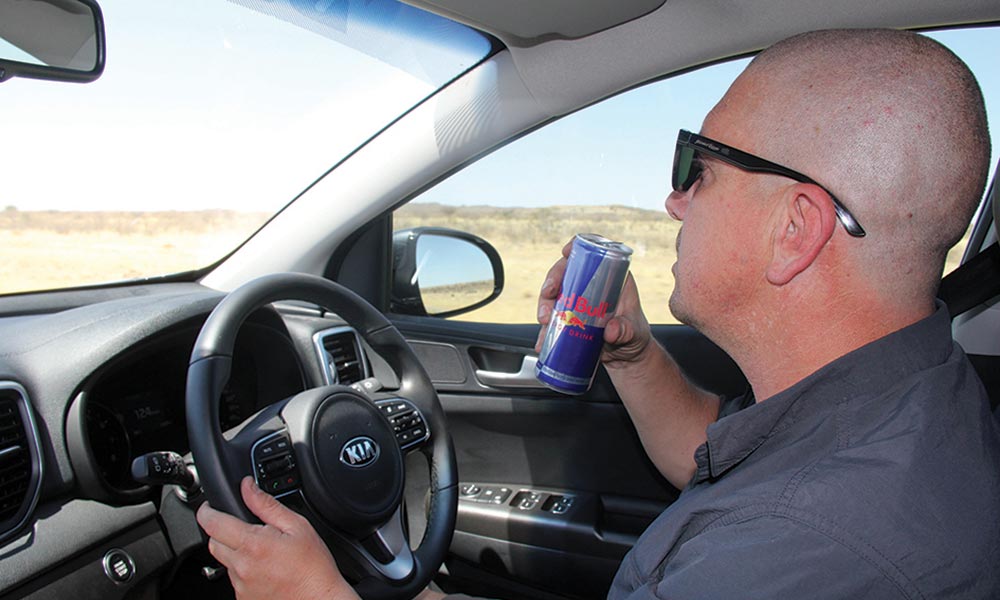
Back in South Africa, we did what every self-respecting overlander would do: we stopped for a Wimpy breakfast. We hadn’t really had anything to eat in Zimbabwe. Danie had attempted some chicken and chips the previous night, but it had been boiled to the point where it had turned into chicken biltong. So we rather enjoyed our breakfast. We also enjoyed the clean bathrooms and the ability to obtain funds from an ATM. If nothing else, a trip to Zimbabwe will rekindle your appreciation for the smaller things in life. Feeling better, we headed for our next destination: Komatipoort. Last year, we had travelled directly from Chipinge to Mozambique, but with trouble brewing north of the Save River, we decided to travel to Moz via South Africa this time. Travelling through South Africa was delightfully uneventful, and just after nightfall, we arrived at the border post. We had no problems, and we were in Maputo about 90 minutes later. Thankfully, we could go straight to sleep, since we wouldn’t be meeting with a local cancer society until the following morning. We stayed at the Sommerschield Guest House, which is tough to spell on Google, but worth the effort of finding. If you’re looking for a decent place to sleep in Maputo, it offers exceptional value for money.
After three very rough days, we now had a much less daunting day ahead. Once we’d met with local cancer kid caregiver Miguel, we left Maputo and drove to the Swaziland border post. The distance from Maputo to the border was short, but we caught the tail end of rush hour, which slowed us down immensely. We saw no less than three bumper bashings as we navigated the traffic. The border between Mozambique and Swaziland is quiet, but it houses what has to be some of the rudest officials in all of Africa. Even 18 months after our first Seven7 drive, the rudeness of the official at the Swaziland border post still remains one of my clearest memories from last year. Sadly, it was the same thing this time. Mozambique’s officials weren’t friendly, but they weren’t openly hostile, either. Swaziland’s officials, meanwhile, seemed to revel in their rudeness. The customs official did nothing but grunt and toss our papers at us. The immigration official watched an old episode of Mr Bean (the one where he goes to church) so intently, that he barely took his eyes off the screen long enough to acknowledge our existence.
It’s difficult not to be offended by this sort of rudeness. However, it’s worth taking a moment to imagine – to really, really imagine – what it must be like to be stationed at a godforsaken border post with nothing but old episodes of Mr Bean to occupy your time. I’m sure it would crush my spirit and turn me a tad rude, too. I don’t know if Swaziland quite literally and intentionally marginalises its rude people by pushing them to its borders, but every other person we met in the country was smiling, friendly and up for a chat. We spent an unnecessary (but enjoyable) amount of time debating Jacob Zuma’s shenanigans with a fuel station attendant, and were given the most intricate directions you could ask for by an official at a road block. If travel in the country is defined by anything in particular, though, it is by speed bumps. I think Swazi-land has more speed bumps per square kilometre than it has people. You could be flying down perfect blacktop, only to be confronted by a series of speed bumps just as you round a corner. The rationale behind these speed bumps is difficult to understand, until you see how some of the locals drive. Were it not for these bumps, I’m sure the small percentage of people who actually own vehicles would utterly decimate the rest of the population.
As soon as the speed bumps disappear, someone does something incredibly stupid and reckless: overtaking on a blind rise or corner, driving way to fast, ignoring solid lines, and so on. When the roads are this good and the people this reckless, speed bumps suddenly seem like a pretty elegant solution. Having successfully negotiated 3 862 speed bumps (that’s an estimate), and having dropped off some toys at the Nazarene Hospital in Manzini, we reached the Sicunusa border post to South Africa. We hopped across and headed for the Battlefields Country Lodge & Sports Resort, where we spent the night. Compared to what we had endured while travelling through Namibia, Botswana and Zimbabwe, this was a rest day. It was less than three hours from Dundee to Sani Pass. We left early, and stopped for brunch at Underberg. After that, we headed up the pass. Thanks to the AWD system on the Sportage, getting up the pass was easy, even though recent rains had caused it to deteriorate quite substantially. We took our time going up, taking pictures and enjoying the views.

Since this day was such a dawdle, now seems like an appropriate moment to acknowledge the performance of the Kia. The Sportage did incredibly well. Not once did it give us any hassles. With its 2.4-litre engine and automatic gearbox, it had made the trip as painless as can reasonably be expected. And then there was the infotainment system, linked to a high-end JBL sound system, which had kept the tunes pumping; and the cup holders, which had facilitated our liberal use of Red Bull. The Sportage’s all-round performance really impressed us. Sure, it’s a vehicle that very few people will ever take out of the city, but on this trip it proved that it can deal with some pretty horrible circumstances. And, boy, does it love the twisties! It is spacious, fun to drive and can deal with gravel if it needs to. And did I mention the infotainment system? It’s really good. That moment when the Kia crested the hill and we drove into Lesotho, we felt victorious. It was pretty much over. Since the first day of the trip, Sani Mountain Lodge had been our shining oasis; the steady beacon we had focused our attention on during those dark and desperate moments. Now we were here.
Exhibiting what can only be described as monk-like self control, we drove straight past the lodge to Touching Tiny Lives in Mokhotlong, where we handed out some toys. Our mission accomplished, we headed back to Sani Mountain Lodge. When we arrived, we still had hours of daylight left. So what to do? A little celebratory drink was in order, we decided, so we headed for the bar. We ordered two Jäger-meisters, the cost be damned. We were celebrating, after all. When the bill arrived, however, we were surprised to discover that Jaegermeister was priced much more affordably here than in Botswana. So we decided to have some more. When we were done ‘celebrating’, we retired to a cozy chalet. Life was good. And so our trip ended.
There was still the small matter of driving to Unitas Hospital in Pretoria, where our trip would officially end, but that was nothing compared to the distances we had already travelled. It had been an interesting experience – a tough project undertaken for a somewhat sombre cause. The defining characteristic of the trip had undoubtedly been exhaustion, we had been tired for most of the trip. But, as is always true of travel in Africa, there had been both good and bad moments.We also had fun, sure. Just not in Zimbabwe. We spent some spare time pondering the meaning of life, and the meaning of Seven7 drive, too. We’ve come up with a new plan for 2017… more on that later though. Time for another Jäger-meister. And some sleep.
DAY 1. South Africa to Namibia
Sleepy Desert – Awake, awake, you sleepy desert Awake, awake, it’s a-comin’ day
Stick your head out of the window And see what your true lover says – Sleepy Desert, Uncle Earl
DAY 2. Namibia to Botswana
The Road and The Radio Spent the night in Carolina, got up early out of bed Bought a Red Bull and a road map and a old Stones cassette Setting my sights south bound, no reason or rhyme Threw up a prayer just lookin‘, just lookin’ for a sign – The Road and The Radio, Kenny Chesney
DAY 3. Botswana to Zimbabwe
Going the distance He’s going the distance. He’s going for speed. She’s all alone
In her time of need. Because he’s racing and pacing and plotting the course, He’s fighting and biting and riding on his horse, He’s going the distance – The Distance, Cake
DAY 4. Zimbabwe to Mozambique
F%#@ tha Police F%#@ that sh*t, cause I ain’t the one for a punk mother$%#@ with a badge and a gun to be beating on, and thrown in jail We can go toe to toe in the middle of a cell – F%@# tha Police, N.W.A
DAY 5. Mozambique to Swaziland to SA
5 (Million) Humps
Sally the camel has five humps
Sally the camel has five humps
Sally the camel has five humps
So ride Sally ride (boom, boom, boom, boom) – Sally the Camel, Barney the Dinosaur
DAY 6. SA to Lesotho
Today I don’t feel like doing anything I’ll be lounging on the couch, Just chillin’ in my snuggie Click to MTV, so they can teach me how to dougie ’Cause in my castle I’m the freaking man –The Lazy Song, Bruno Mars
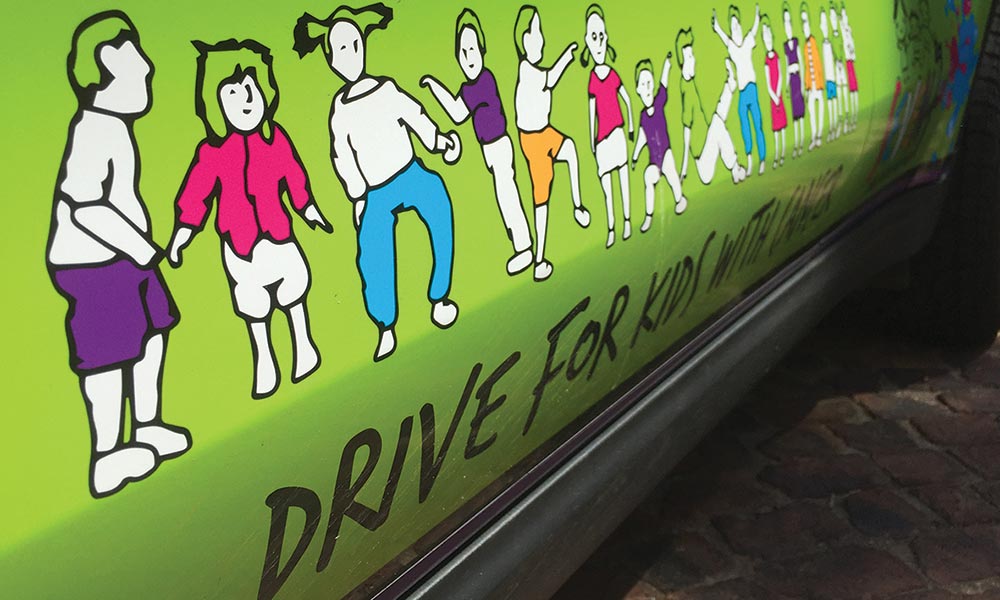
DAY 7. Lesotho to the finishing line in South Africa
Mama, I’m Coming Home Times have changed and times are strange Here I come, but I ain’t the same Mama, I’m coming home – Mama, I’m Coming Home, Ozzy Osbourne
The accessory partners
The lights
Driving in rural Africa at night is no walk in the park. Animals, people and cars that simply park in the road (with no lights on) pose a very real threat. To see better in the dark, 4×4 Mega World fitted a set of IPF Extreme driving lights to the aftermarket nudge bar. The rectangular IPF 800 halogen units, fitted with 100W globes, feature a tough, heavy gauge steel body, hardened glass lens and a tough-as-nails mounting system. They proved invaluable on this trip.
More information: 4x4megaworld.co.za
The nudge bar
The Maxe (maxe.co.za) nudge bar is an official Kia-approved accessory that can be ordered with your new Sportage. It costs R5 600 (excluding fitment). This nudge bar is normally finished in chrome, as befits such a trendy adage. We preferred to go black though, so the folks at Plastidip South Africa (plastidipsa.co.za) repainted the chrome bar in black with the company’s new Liquid Armour rubberised paint.
The roof rack
Front Runner came to the party with one of its lightweight Slimline 2 aluminium racks (1 165×1 156mm) fitted onto the standard roof rails (kits start from R4 995). This rack carried six ammunition boxes filled with toys and gears, and the boxes were, in turn, covered in two very handy Front Runner transit bags. These bags (R795 each) are water resistant and dust proof, and kept our gear and the toys dry and dust-free. We reckon the coolest feature of this roof rack system was the Front Runner Stratchits straps (R295 each). Essentially a stretchable ratchet strap, the ends simply click into the roof-rack’s tie-down rings, and the strap is tightened by hand. Because of the elastic quality the straps, each rated at 136kg, they actually flex with the load. They were a heck of a lot easier to use than the traditional ratchet straps we used last year.More information: frontrunner.co.za
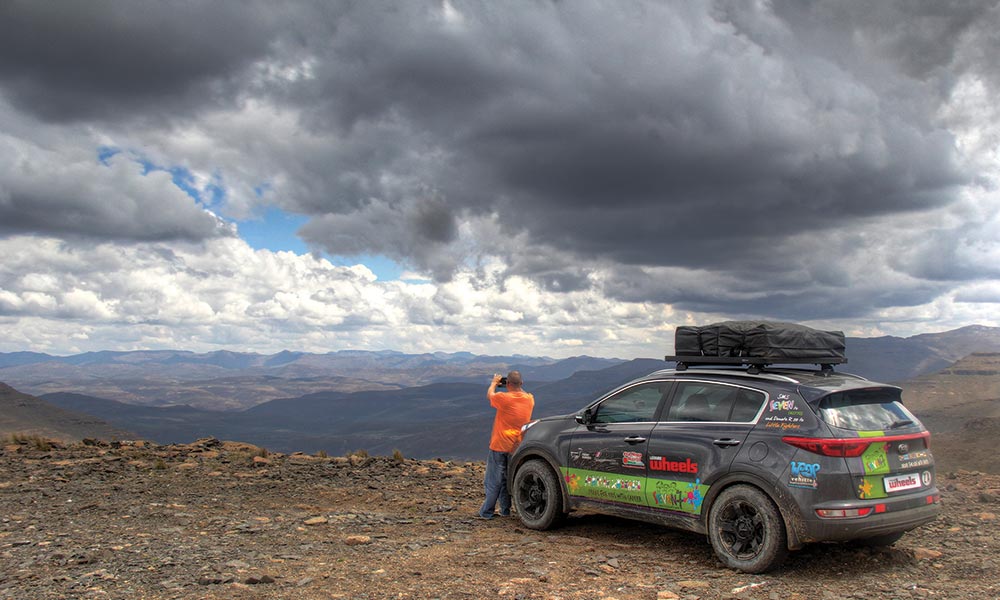
The wheels
The latest Kia Sportage 2.4GDI AWD SX automatic comes standard with flashy 19-inch rims and low-profile tyres that will be an asset in a beautiful, tarred mountain pass – but a major risk when driving through rural Africa. Like in Zimbabwe’s Chipinge area, where the potholes are outnumbered only by police officers looking to make easy money off foreign cars. So we had to change the game in the wheels department. We opted for a set of 17-inch XD Series Rockstar2 rims (rhc.co.za), and wrapped some new Bridgestone 697 all-terrain tyres (235/65 R17s) around the American wheels. Driving almost 7 000km we hit plenty of potholes, especially at night when there was oncoming traffic and we couldn’t deploy the full might of the IPF Extreme lights. But we never had a tyre issue, and the 697s just kept on taking the shots without any complaints.
More information: bridgestone.co.za
The wrap
Creating a unique jacket for the Kia Sportage in a very short time was quite a challenge. But when you need to rely on a company’s that can deliver when the crunch is nigh, best you contact Fineline Design and Wrap Vehicles (wrapvehicles.co.za). The company did a great job in a very short time, incorporating Aussie ex-pat Eddie Botha’s design (eddiebothacreations.com) of kids at play in a discreet yet rather illustrious and racy manner. South Africa: littlefighters.org.za
The contacts
If you want to get involved and lend a helping hand in one of the countries we visited, you can contact the following organisations or individuals.
Namibia: can.org.na
Botswana: Childhood Cancer Parents Association of Bots-wana, Kebaabetswe Sethlong @ [email protected]
Zimbabwe: Dr Kudzanai Guveya, Chipinge District Hospital @ [email protected]
Mozambique: Miguel @ [email protected] (Mozambique project that provide for kids with cancer)
Swaziland: [email protected] (Manzini government cancer contact)
Lesotho: touchingtinylives.org
Text and photographs: GG van Rooyen
